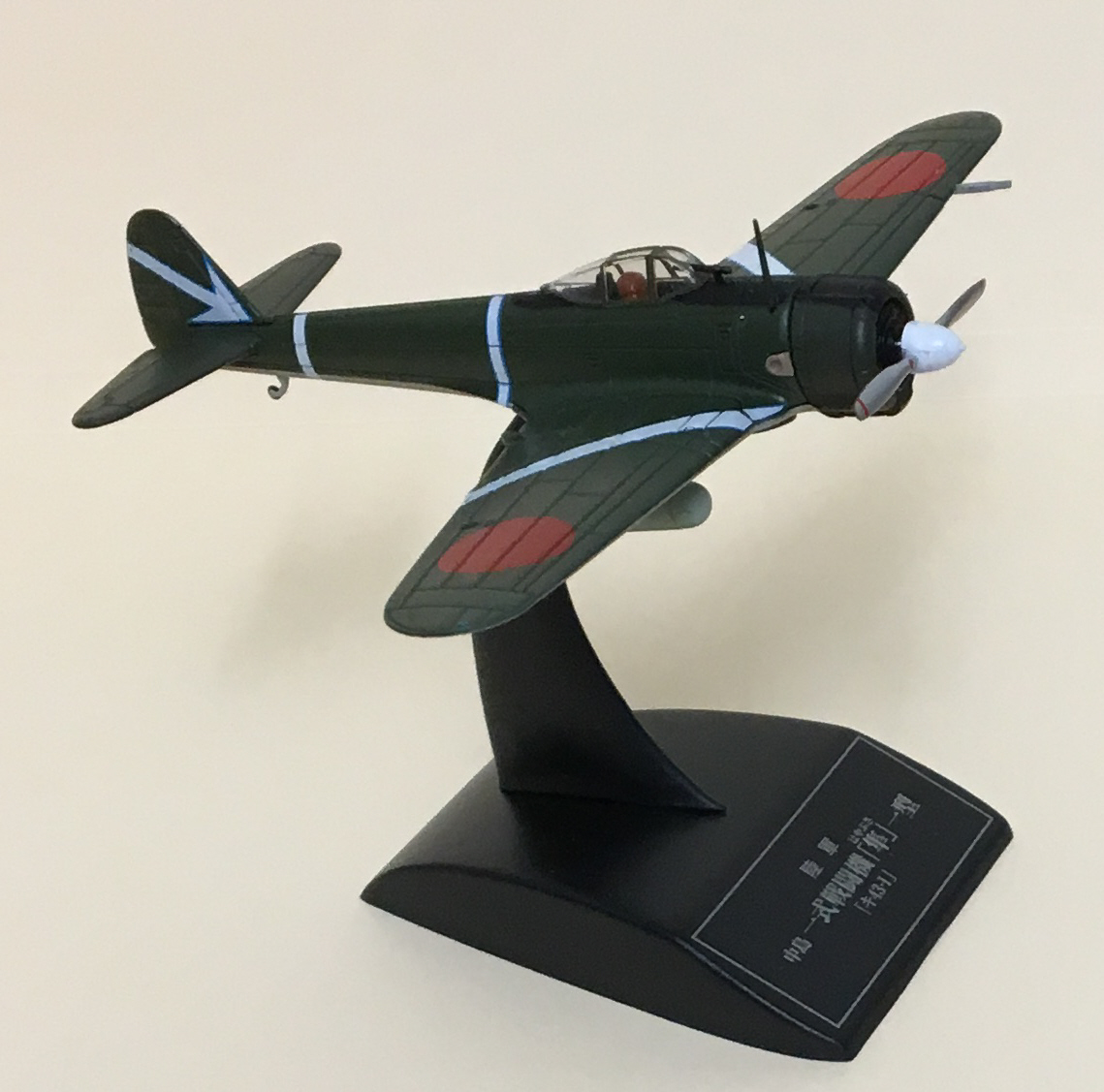FACTOIDS & TRIVIA
The Japanese Imperial Navy had the "Zero" and the Japanese Imperial
Army had the "Hayabusa", sometimes called the Army Zero. The Ki-43
Hayabusa (allied code name "Oscar") was introduced in October 1941 as a
replacement for the Ki-27 "Nate". It had retractable landing gear, was
extremely maneuverable, and was about 12 mph faster than the Ki-27. Its
biggest drawbacks were poor self-sealing fuel tanks, lack of armor
plating, and light armament. The earliest Ki-43's (Ki-43-Ia) were
fitted a pair of .303 inch machine guns which did
not provide much firepower. One of the .303 guns was replaced with a
.50 inch machine gun in the Ki-43-Ib, but soon all early versions were
given a pair of .50 inch guns (Ki-43-Ic as shown below). The Ki-43-Ic
version also had hard point mounts for a pair of small bombs or 45
gallon external fuel tanks. The Ki-43 was used as a general
fighter serving as
an interceptor as well as bomber escort throughout World War II. The
Hayabusa was also used for kamikaze
missions at the
end of the war. Nakajima produced 716 Ki-43-I aircraft. Here's a clip
from a Japanese
propaganda film showing off the new Ki-43-I. If you only have a
minute, watch from 1:55 to 2:55. The Oscar was crazy agile!
NAKAJIMA
Ki-43-I Hayabusa "Oscar"

Class: Fighter
Crew: 1
Engine: Nakajima Ha-25 14-cylinder
radial (950 hp)
Max Speed: 308 mph at 13,125 ft
Climb Rate: 2,983 ft/min
Service Ceiling: 38,500 ft
Range: 745 miles
Armament: 2 x .50 inch machine
gun
(fuselage mount)
2 x 33 lb
bombs
Model Scale:
1:87
Back
to the Japanese
Combat Aircraft of WWII
Menu

